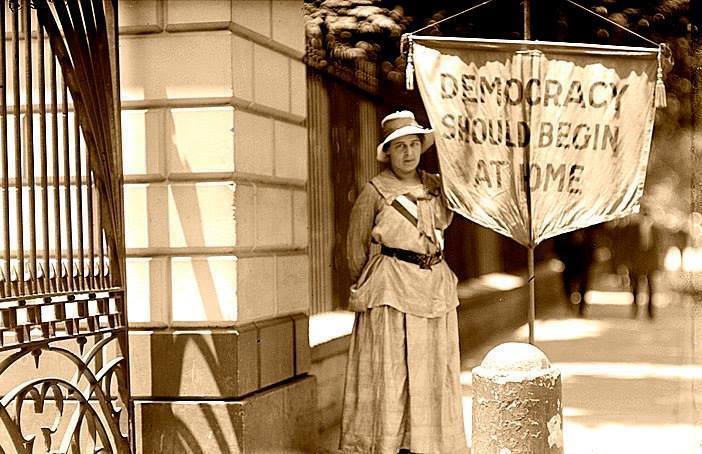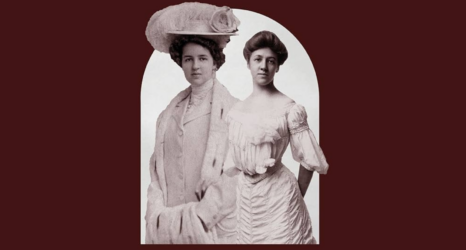
Today in Feminist History is our daily recap of the major milestones and minor advancements that shaped women’s history in the U.S.—from suffrage to Shirley Chisholm and beyond. These posts were written by, and are presented in homage to, our late staff historian and archivist, David Dismore.
September 24, 1917: Though Representative Joseph Walsh, Republican of Massachusetts, called it yielding to “the nagging of iron-jawed angels,” the House voted 181-107 today to finally create a separate Committee on Woman Suffrage.

Up until now the Susan B. Anthony (woman suffrage) Amendment had been just one of many issues to be dealt with by the always overburdened House Judiciary Committee.
The debate today was heated, and at times, less about whether women should be able to vote than about the “Silent Sentinels” who have been taking up their posts along the White House fence each day since January 10th. They are there to point out the hypocrisy of President Wilson vigorously campaigning for democracy around the world while not even endorsing – much less lobbying for – a Constitutional amendment that would bring democracy to millions of voteless women in his own country. Representative William Stafford, Republican of Wisconsin, called the Sentinels’ peaceful picketing “outlawry,” and Rep. Walsh referred to the pickets as “bewildered, deluded creatures with short skirts and short hair.”
The fight for creation of the suffrage committee was led by Representative Edward Pou, Democrat of North Carolina, and Representative Jeannette Rankin, Republican of Montana. After quoting some State Constitutions to show how hard it would be for women to win suffrage in some States, Rep. Rankin told her fellow House members:
“Perhaps it is news to you to know that some of the women of the United States can never be enfranchised except by Federal Amendment. Constitutions of the States are such that it is practically impossible to amend them.”
Representative Rankin used New Mexico as an example of the excessive burdens local suffragists would have to overcome in some States to win the vote. That State requires 3/4 of all votes cast, and a 2/3 majority in every county to amend its constitution through a referendum.
Representative Pou, who chairs the House Rules Committee, said that President Wilson had written a letter to him in which the President said that he was in favor of a Suffrage Committee in the House. A skeptical Rep. Edwin Webb, Democrat of North Carolina, who heads the House Judiciary Committee, challenged Pou to produce the letter, which he did.
Both Republicans and Democrats went on record in 1916 as favoring woman suffrage, though only on a State-by-State basis. President Wilson is personally in favor of women voting, but unwilling to endorse the Anthony Amendment or use his considerable influence on his fellow Democrats to push it through Congress. So, pressure on President Wilson to declare passage of the amendment to be a high-priority “War Measure,” and on both parties to endorse nationwide suffrage, as well as on individual Members of Congress to vote in favor of the Anthony Amendment will continue.
Carrie Chapman Catt and the National American Woman Suffrage Association will lobby the traditional way, while Alice Paul and the National Woman’s Party will continue their more militant tactics, and the combination of the two should produce even more favorable results. The “Silent Sentinels” were out today as usual, and as the House was voting, four more pickets were arrested.





